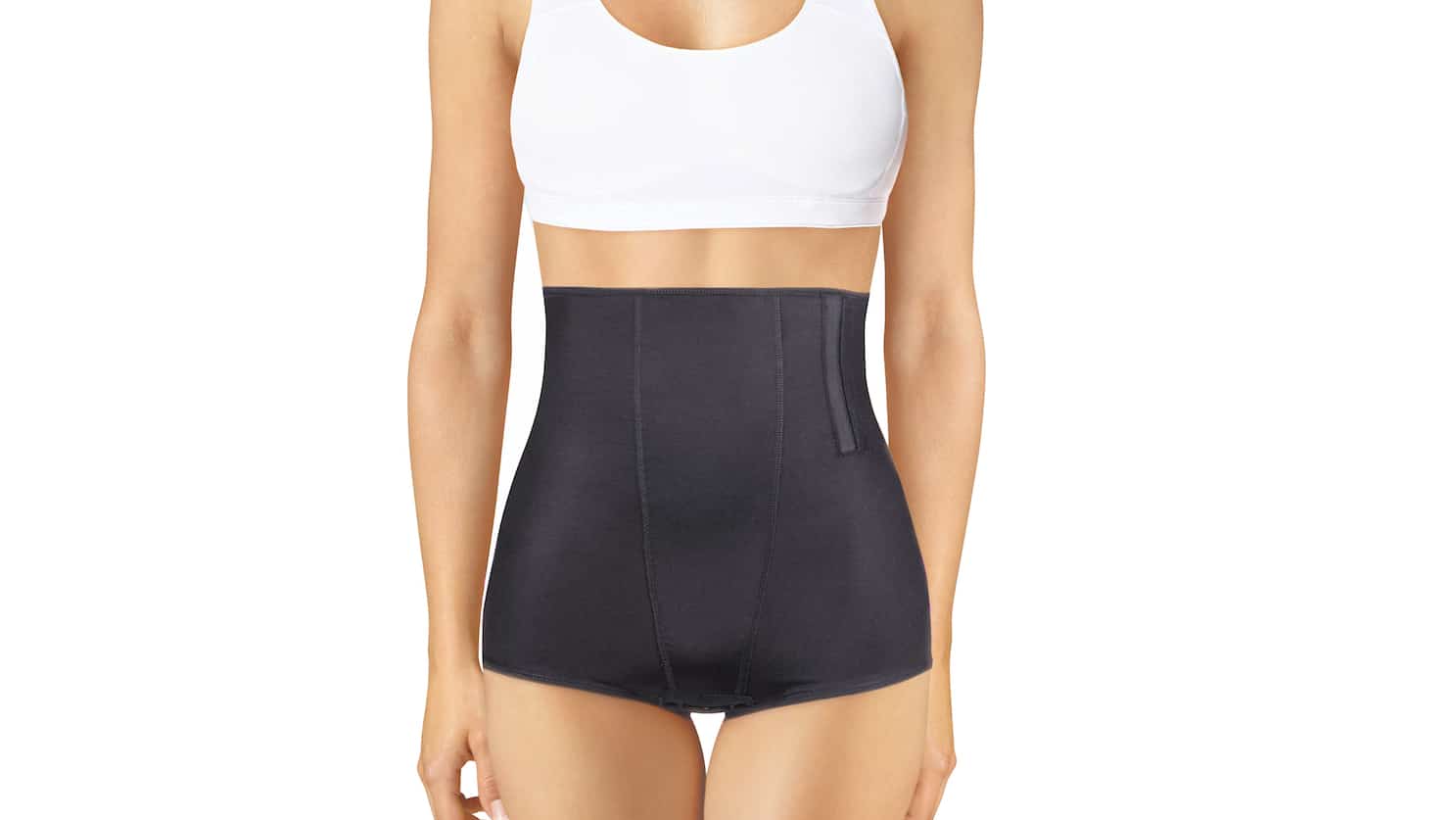A recent Team Costhetics discussion on liposuction revealed a difference of opinion regarding wearing a compression garment after surgery.
Some people reported reading that some doctors consider the garments optional. That point of view was challenged (and trumped) by others who noted expert lymphatic drainage specialists consider it a must. They recommend at least 3-4 weeks in a stage one garment and a minimum of another 4 weeks in a stage 2 garment.
When it comes to medical advice regarding cosmetic surgery and aesthetic enhancement, Costhetics always sides with the experts. After reading this article, we think you will, too.
Compression Garments: Getting Back into Circulation after Lipo
Compression garments may not win accolades on the fashion runway, but these high-tech health aids win cheers for their ability to facilitate healing and enhance results after liposuction surgery. Compression garments are made from versatile, synthetic fabrics such as lycra or nylon. They are more comfortable and effective than ever, with a graduated, three-dimensional stretch to offer superior support and encourage the reabsorption of subcutaneous fluids.
Inside your body, the tightness of a compression garment works to increase the rate that lymphatic fluid is filtered out of the body’s soft tissue. The excess fluid is then able to be released back into the body’s circulation and expelled. On the outside, compression provides external containment that helps control excess swelling.
Another key improvement in today’s compression garments for liposuction is the addition of anti-microbial, breathable textiles that improve comfort and prevent skin irritation, too.
4 Reasons You Need to Compress & Decompress after Lipo
The last thing you wanted is to be stressed out during your recovery from liposuction. A compression garment will help keep you calm and relaxed because:
- Compression garments minimise pain and swelling after lipo – The non-stop pressure (compression) provided by your post-operative garment helps your body absorb fluid and prevent build up.
- Compression garments speed up recovery time after lipo – If you don’t allow swelling to develop, you’ll spend less time waiting for excess fluid to be re-absorbed and flushed away.
- Compression garments help prevent wrinkles – You won’t need to wrinkle your brow worrying about wrinkled skin after lipo. Compression garments help keep the skin taut to prevent furrows.
- Compression garments contribute to optimal results – The pressure exerted by your garment helps your skin reconfigure itself to its new contours.
It’s All in the Fit
There are risks associated with wearing a compression garment, most of them related to excess compression. These garments are tight by design and may be uncomfortable initially when swelling is at its maximum. If the garment is painful, however, something is wrong, and you should contact your doctor.
Excess compression can lead to an increased risk for pressure necrosis and deep vein thrombosis (DVT). Your surgeon will discuss the importance of a good fit and wearing your garment properly. Not doing so can contribute to seroma formation or surface contour irregularities.
If you have any concerns about the fit of your compression garment or anything else related to your liposuction surgery and recovery, do not hesitate to contact your doctor. They will want to hear from you and work with you to ensure your good health, beauty, and satisfaction.

Oops! I meant marena shorts. Also have an abdominal Binderfrom my doc. Should I wear that as well or just when I’m not wearing the shorts which are high waisted and somewhat compress my abdomen?
I bought a high waisted thigh shaper by MeMoi s/1. It’s pretty snug but not overly tight. Will it reduce swelling from liposuction surgery post died flap breast reconstruction? How many hours a day must I wear for best results? Do these really help with leg shaping? Doc says I have laxity in my skin (loose). I don’t want to have to need another surgery for sagging skin. Also, bought Marena compression shirts but they are way too tight. Will the Slim Me MeMoi’s work?
Thanks!